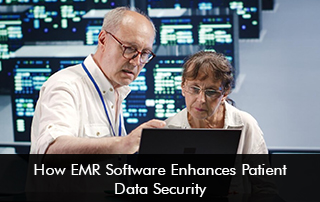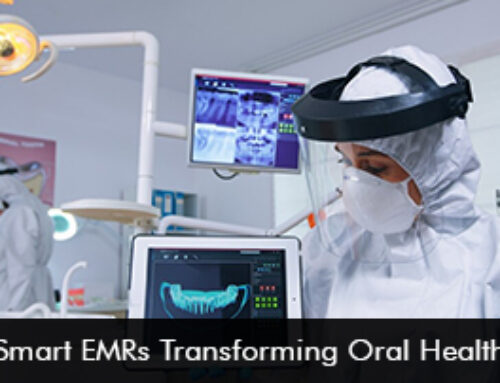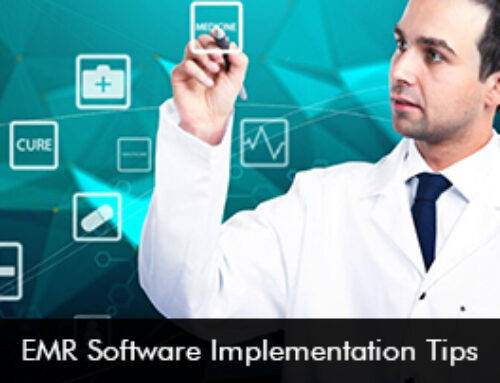EMR software provides a structured, secure, and efficient way to manage and protect patient information. This blog explores the key ways in which EMR systems bolster patient data security while addressing the evolving challenges in healthcare.
Why Is Patient Data Security Important in EMR Software?
In healthcare, patient trust is paramount, and this trust depends on safeguarding sensitive data. Compromised patient records can lead to dire consequences, including medical identity theft, financial fraud, and even harm to a patient’s care plan due to tampered records. Moreover, healthcare organizations face significant legal and financial penalties for failing to meet data protection standards.
Cybersecurity breaches in healthcare are among the most costly, with attackers often targeting the sector for its wealth of valuable information. By focusing on robust patient data security, healthcare providers not only protect their patients but also maintain their reputations and avoid substantial compliance-related fines.
The Role of EMR Software in Data Security
EMR software serves as the backbone of modern healthcare data management, offering a centralized platform for patient records while implementing advanced security measures. Unlike paper records, which are prone to physical theft or loss, EMR systems leverage technology to protect data from various threats. These systems use encryption, access controls, and real-time monitoring to secure sensitive information.
Furthermore, they ensure that only authorized personnel can access specific patient data, reducing the chances of accidental or malicious breaches. By continuously updating security protocols, EMR software adapts to emerging cybersecurity challenges, making it an indispensable tool for healthcare providers.
Key EMR Software Features That Enhance Patient Data Security
1. Role-Based Access Controls (RBAC)
Role-based access controls ensure that only authorized personnel can access specific data, depending on their role in the organization. For instance, a doctor may have full access to a patient’s medical history, while a receptionist might only view contact details necessary for scheduling appointments. This compartmentalization limits exposure and reduces the risk of sensitive data falling into the wrong hands. RBAC also enables healthcare administrators to customize permissions based on job descriptions, ensuring minimal access levels for non-essential roles. Furthermore, the inclusion of audit logs ensures that every access or modification to patient data is recorded, offering accountability and transparency.
2. EMR Software Data Encryption
Encryption is a fundamental feature of EMR software that secures data by converting it into an unreadable format, which can only be deciphered with a specific decryption key. This protects patient information both during storage in databases and while being transmitted between systems or users. Even in the event of a data breach, encrypted information remains inaccessible to attackers. Modern EMR systems utilize advanced encryption standards, such as AES-256, to ensure optimal protection. Additionally, encrypted backups allow healthcare providers to recover patient records without compromising their integrity during restoration processes.
3. Two-Factor Authentication (2FA)
Two-factor authentication (2FA) adds an extra layer of security by requiring users to verify their identity through two separate methods, such as a password and a one-time code sent to their mobile device. This feature significantly reduces the risk of unauthorized access, even if a password is compromised. For added security, some systems incorporate biometric verification, such as fingerprint or facial recognition, making it nearly impossible for unauthorized users to gain entry. Implementing 2FA ensures that only authorized personnel can access the EMR system, which is especially critical in large healthcare organizations where multiple users interact with sensitive data.
4. Automatic Logout and Session Timeout in EMR Software
To prevent unauthorized access when a user steps away from their workstation, EMR systems incorporate automatic logout and session timeout features. After a predefined period of inactivity, the system automatically logs the user out, ensuring that patient data isn’t exposed to unauthorized individuals. This feature is particularly useful in busy clinical settings where healthcare staff may be called away unexpectedly. Moreover, users can manually lock their sessions before stepping away, adding another layer of security. Together, these measures protect data without disrupting workflows, balancing security with efficiency.
5. Compliance with Legal Standards
Adherence to data protection laws is a core aspect of EMR software design. Systems are built to comply with regulations such as HIPAA in the U.S., GDPR in the EU, and the HITECH Act, which set standards for safeguarding patient information. These regulations mandate measures like encryption, access control, and breach notification protocols, ensuring that healthcare organizations maintain secure practices. Compliance with these laws not only protects patient data but also shields healthcare providers from costly fines and legal actions. By automating compliance-related tasks, EMR systems make it easier for organizations to stay within legal boundaries.
Advanced Security Features in Modern EMR Software
1. Blockchain Technology
Blockchain is an emerging technology being integrated into some EMR systems to enhance security and transparency. It creates an immutable ledger of transactions, ensuring that data cannot be altered or deleted once recorded. This makes it easier to detect unauthorized changes or tampering with patient records. Furthermore, blockchain decentralizes data storage, eliminating a single point of failure that hackers could exploit. While still in its infancy in healthcare, blockchain holds immense potential for improving the integrity and security of patient data in the coming years.
2. Artificial Intelligence (AI) for Threat Detection
AI is revolutionizing data security by enabling real-time monitoring and threat detection in EMR systems. Machine learning algorithms analyze user behavior and system activity to identify unusual patterns that could indicate a cyberattack or unauthorized access. For example, if an employee attempts to access data outside their role’s scope or during odd hours, the system can automatically flag and block the activity. AI-driven tools also help healthcare organizations predict vulnerabilities and address them proactively, ensuring robust protection against evolving cyber threats.
3. Cloud-Based EMR Software Security Measures
Cloud-based EMR systems leverage advanced security measures offered by cloud service providers. These include end-to-end encryption, regular software updates, and robust disaster recovery options. Cloud systems also allow for data to be stored across multiple secure locations, reducing the risk of total data loss due to localized incidents like natural disasters. Additionally, cloud providers often employ geofencing technology, which restricts access to patient data based on geographic location, further enhancing security.
How EMR Software Prevents Data Breaches
1. Employee Training Integration
Human error remains one of the leading causes of data breaches in healthcare. To address this, many EMR systems include employee training modules that educate staff about cybersecurity best practices. These modules cover topics like recognizing phishing scams, creating strong passwords, and identifying suspicious activity. Regular training ensures that all users are aware of their responsibilities in protecting patient data and helps build a culture of security within the organization.
2. Secure Data Sharing Between EMR Software
When patient information needs to be shared with other healthcare providers, EMR systems ensure secure transmission methods. Encrypted communication channels, such as secure email or patient portals, protect data during sharing. Additionally, access controls allow providers to specify who can view or download shared information. These measures minimize the risk of data leaks while ensuring that information is accessible to authorized parties involved in patient care.
3. Regular Security Audits
Routine security audits are a proactive approach to identifying vulnerabilities in an EMR system. These audits assess the system’s compliance with regulations, review access logs for suspicious activity, and evaluate the effectiveness of current security measures. Automated tools within EMR software can streamline this process, providing detailed reports and actionable insights. By conducting regular audits, healthcare providers can address weaknesses before they are exploited.







